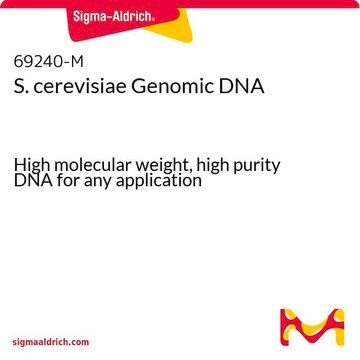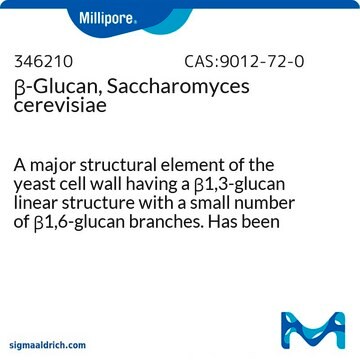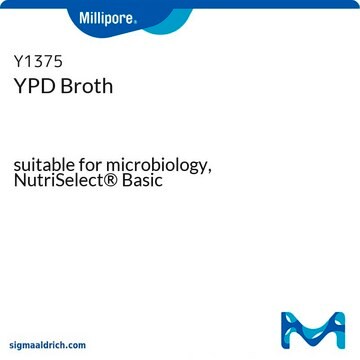This product is specifically prepared to undergo autolysis in aqueous buffer solution at 37°C, optimized for retaining enzyme activity post-drying, though not for cell viability or growth. It serves as an excellent starting point for enzyme extraction processes. For proliferation, Product YSC2 is a viable baker’s yeast, ready to grow once rehydrated, with only about 10% subject to autolysis at the same temperature. It is the preferred option for those looking to cultivate yeast effectively.
YSC1
Yeast from Saccharomyces cerevisiae
Type I
Synonim(y):
(Bakers yeast)
Wybierz wielkość
634,00 zł
Wybierz wielkość
About This Item
634,00 zł
Polecane produkty
pochodzenie biologiczne
Saccharomyces cerevisiae
typ
Type I
Formularz
powder or solid
Zastosowanie
food and beverages
microbiology
temp. przechowywania
2-8°C
Opis ogólny
Zastosowanie
Działania biochem./fizjol.
Przestroga
Uwaga dotycząca przygotowania
Kod klasy składowania
11 - Combustible Solids
Klasa zagrożenia wodnego (WGK)
WGK 3
Temperatura zapłonu (°F)
Not applicable
Temperatura zapłonu (°C)
Not applicable
Środki ochrony indywidualnej
Eyeshields, Gloves, type N95 (US)
Wybierz jedną z najnowszych wersji:
Certyfikaty analizy (CoA)
Nie widzisz odpowiedniej wersji?
Jeśli potrzebujesz konkretnej wersji, możesz wyszukać konkretny certyfikat według numeru partii lub serii.
Masz już ten produkt?
Dokumenty związane z niedawno zakupionymi produktami zostały zamieszczone w Bibliotece dokumentów.
Klienci oglądali również te produkty
Protokoły
This procedure may be used for the determination of Lyticase activity using Baker’s yeast as the substrate.
Procedura ta może być stosowana do oznaczania aktywności litykazy przy użyciu drożdży Bakera jako substratu.
-
Hi We would like to expand this yeast in our lab for an experiment. Would you please recommend best growth media for expanding this Yeast.
1 answer-
Helpful?
-
-
What are the differences between YSC1 and YSC2?
1 answer-
YSC1 is dried to prevent enzyme inactivation during enzyme extractions from yeast. On the other hand, YSC2 is fast dried and yields 90% viable cells in solid form. The primary difference lies in the method of preparation, particularly in the drying process.
Helpful?
-
Active Filters
Nasz zespół naukowców ma doświadczenie we wszystkich obszarach badań, w tym w naukach przyrodniczych, materiałoznawstwie, syntezie chemicznej, chromatografii, analityce i wielu innych dziedzinach.
Skontaktuj się z zespołem ds. pomocy technicznej














